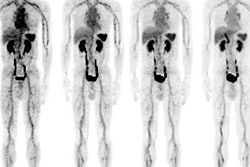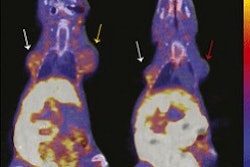Dear Molecular Imaging Insider,
It is impossible to avoid mobile phones in our daily lives. For technologists in nuclear medicine departments, the presence of a mobile phone can be a particularly pesky problem, given new research indicating that electromagnetic interference from the devices could affect the performance of gamma cameras.
How serious is this issue? Australian researchers tested an Apple iPhone 6 in four operating modes on two different gamma cameras using a thyroid phantom. While the researchers aren't ready to recommend a complete ban on mobile phones in the nuclear medicine department, they did advise caution when using phones near gamma cameras. More details are available in our Insider Exclusive.
In other news, two gender-related studies offer some insight into the workings of the female brain. When researchers from Washington University School of Medicine in St. Louis applied a machine-learning algorithm to data from multiparametric PET brain scans, they discovered that women's brains are more "youthful" than those of men of the same age. This advantage could be why women stay mentally sharper later in life.
On the other hand, flortaucipir-PET scans revealed increased levels of tau tangles in a key brain region in women, which could explain why they develop Alzheimer's disease-related dementia earlier than men and experience faster cognitive decline.
Researchers from South Korea and Germany are reporting excellent image quality and a high detection rate with PET/CT for acute venous thromboembolism, thanks to a new F-18-based radiotracer currently being developed. The tracer, F-18 GP1, targets glycoprotein (GP) IIb/IIIa receptors and is designed to improve the visualization of blood clots in veins and arteries. The tracer was also well-tolerated by the 20 patients in the study.
Finally, much has been written about the promise of PET/MRI. While the hybrid modality's range of clinical applications appears expansive, an editorial in the Journal of Nuclear Cardiology offers some food for thought on whether it might be time to pump the brakes on wider use of PET/MRI, at least in cases of cardiac sarcoidosis. The piece interestingly weighs the pros and cons of PET/MRI, as it balances clinical efficacy with operational realities.
Be sure to stay in touch with the Molecular Imaging Community on a daily basis for the latest research and news from around the world.




















